This is Yun Hai Taiwan Stories, a newsletter about Taiwanese food and culture by Lisa Cheng Smith 鄭衍莉, founder of Yun Hai. If you aren’t yet a subscriber, sign up here.
Around this time of year, I typically write to let you know that a lovely Taiwanese calendar is available for preorder, designed by Five Metal Shop in the style of the old almanacs seen throughout Taiwan. Sadly, they are no longer producing this calendar. Like many good things, it was a labor of love that had gotten overwhelming. All things have their time, and we respect and admire Five Metal Shop’s decision. *hides last year’s only remaining copy*
What we missed most about not offering the calendar wasn’t the calendar itself, but the presence of an exciting Taiwanese voice in our end-of-year mix. So, we found something else just as exciting: a self-published guidebook about Lu Rou Fan in Taiwan by artist, photographer, and wanderer Chez Kuo. He visited over a hundred eateries to try their lu rou fan(s), and collected his photographs and notes in a 200-page, magazine-shaped love letter to Taiwan’s Number One Comfort Food. Eat your heart out.
A long time ago, at dinner, my mother explained that growing up in Taiwan, she made do with only plain rice and lard for dinner, self-serve. Meanwhile, I had been avoiding all the gorgeous vegetables so painstakingly stir-fried for me—typical kid. I was horrified by her story, picturing a bowl of room-temperature rice with pasty white fat sitting on top and thinking “wow poor mom” and “i’m so lucky” and “i better eat my vegetables.”
Years later, I went to Taiwan and had an actual bowl of pork lard rice 豬油拌飯 for the first time. I realized then that I’d been had. It was better than the vegetables, and I should have been eating pork lard rice all along.
It’s true that my mom grew up on a shoestring (one time she was given an apple as a gift and treasured it so long it went soft). My grandmother sewed children’s clothing to make extra money, and tended a garden to feed her large family. Many things were done without, improvised, and rough around the edges. But... pork lard rice? An absolute treasure.
To make this humble (classic) dish, shallots are fried slowly to a crisp in rendered lard. Then the lard is generously spooned into a hot bowl of Q steamed rice. Good soy sauce is drizzled on top, and then the dish is garnished with shallot and pork cracklings. It’s the taste of home, abundant in simple pleasure.
Watch the clip above and you may start to understand the emotional significance of this dish—the host cries plaintive tears of joy and longing after sampling a bowl of lard rice in Tainan. Incidentally, when my mom was visiting a few weeks ago, she suggested that we make some. I already had some gorgeous vegetables going on the stove. Oh, how the tables have turned.
(Side note: If you want to make this at home but don’t want to render leaf lard, use our ready-made crispy shallot oil (vegan) as a stand in for pork fat and crackling. Just add soy sauce. Both are available at the shop.)
Lu Rou 101
The sweet, savory, unctuous flavor of Taiwanese pork lard rice is closely related to what many people regard as Taiwan’s truest delicacy: lo ba beng 滷肉飯 in Taiwanese, lu rou fan 滷肉飯 in Mandarin, Taiwanese pork ragù or braised pork rice in English, kong rou fan 炕肉飯 or rou zao fan 肉燥飯 depending on your location, background, and particularities of the dish.
Like its simpler cousin, the flavor base is pork fat, shallots, and soy sauce, but it’s dressed up with rice wine, rock sugar, spices (chef’s choice), and a good long braise to transform it into a fully figured ragù. It’s simple and technical at the same time. Big batches are inexpensive to make and feed a crowd.
Every chef has their version, made with a wide variety of cuts (minced pork, ground pork, or big hunks of belly), and additional ingredients (I’d recommend adding a tablespoon of peanut butter at the end). It’s typically paired with rice but can be spooned on top of noodles or even steamed vegetables—Taiwan’s Sunday sauce.
There are many versions of the perfect Lu Rou Fan, and each one is correct. Mine has a thin, fatty sauce, with only a touch of sweetness and meltingly tender pieces of fatty pork belly. It doesn’t sit on top of the rice like a stew, but soaks into it the way a pat of butter would, leaving all the tender pork morsels on top, like jewels. Treasures.
The version I see most often in the US comes with a braised egg, a slice of yellow pickled daikon, and a piece or two of bok choy. While this bento-style lu rou is one way of serving it in Taiwan, I experienced something different at small establishments around the island, where lu rou isn’t really a main dish, in the American sense of the phrase.
At these eateries, it’s a side and a staple at the same time. Instead of a bowl of white rice, one might order a serving of lu rou fan and a selection of vegetables, soups, and other small dishes. All servings are small, on equal footing, and provide a variety of color, texture, and flavor at the table. Lu rou in this context isn’t usually served with any particular de facto garnish, though some places have a signature pairing, like sour vegetable, black pepper, or even fish floss.
For me, this dressed down version is the purest experience of this dish. In the past, I’ve felt pressured to apologize for its plain appearance, insisting that it tastes better than it looks. Or smother it in neatly sliced scallions for presentation at the table. I’d been ruined by my overgarnished social feeds and couldn’t see that lu rou’s allure is plain as day. I’ve since awakened.
Luroufan Taiwan by Chez Kuo
Enter Luroufan Taiwan. This 200-page, limited-run book is self-published by writer and photographer Chez Kuo, who wandered the island, stopping at over 120 eateries across 13 cities big and small (Taipei, Taichung, Tainan, Chiayi, and Hualien, etc). Each establishment is described with several photos and a short paragraph about their particular style of lu rou, from how the meat is cut, to the sweetness of the sauce, and the unique pairings and garnishes available. Notably, most of the lu rou featured is very plainly served, and Kuo has fully captured their glory.
Chez worked with friends Shiro and Jeff to translate the text into English(!) and Japanese. Each page is marked with both location information and an easy-squeezy QR code that links to Google Maps because god knows it’s hard for us CSL folks to type Chinese characters into a phone.
The book is organized by city and is punctuated by occasional recommendations for coffee shops, bakeries, and places to stay. And, for those not planning to travel, there’s a disarmingly simple recipe for lu rou fan from Oscar Chang, the manager of Rakusaki Hot Pot in Banqiao.
Exclusive Preorder for our Readers
One of the most frequent questions I get from readers is where they should go in Taiwan. The answer is: anywhere. Exploring Taiwan is like following a string of pearls, one thing leads to the next and the next and the next. You just need a starting point.
If you’re planning to visit, this guide will give you a long list of destinations in several cities where you might start your journey. In my experience, every good lu rou is surrounded by good people, more good food, and a lively and welcoming street life.
We’re offering a limited run of this charismatic book just for the readers of this newsletter, delivering in time for the holiday season. Quantities are limited, but not to worry. If it sells out, we’ll start a waitlist so we can fund a second second printing in the new year.
Here’s what you need to know:
Each book is $36, which includes the cost of shipping.
This is a preorder. Books are estimated to start shipping the first week of December and will arrive to you before 12/18, in time for Christmas.
Free shipping and delivery dates applicable only to shipping addresses in the continental US.
Please don’t include other items in your cart; the book will ship separately.
Limit to 2 copies per customer.
There will be a limited quantity available at our brick and mortar shop in mid-December.
Ru Rou Roundup
A few more fun facts before I go:
Kuai Kuai, our favorite very obedient snack provider, released a special lu rou fan flavor in 2023.
You can make this dish at home with your Tatung rice cooker. Here are some things you might need.
If you’re looking to practice your comprehension (or already speak good Mandarin), check out Chez’s interview in this podcast (some highlights: he talks about his motivations behind the book, 魯 vs 滷, and his favorite lu rou fan places).
A Japanese recording artist recently released a song called Midnight Lu Rou Fan. Check out all the adorable comments left by Taiwanese people. One of my favorites, definitively answering the “does lu rou have to have five spice” question:
我是一位餐酒館的店長. 每個晚上三點備製滷肉飯時都會撥放這首歌. 是的! 沒錯! 不需要放五香粉也可以很好吃I am a restaurant manager. I play this song every night when I prepare braised pork rice at 3 AM. Yes! That's right! It tastes good without adding five-spice powder
And finally, on the subject of guidebooks, I also have to call out the newly minted Locavore Guide to Shopping New York City, another self-published guidebook from the heart of an artist. Caroline Weaver walked the streets of all five boroughs, documented most of the truly independent small retail shops, and organized them in the style of the yellow pages of yore. So good! We’re in it!
Thanks, as always, for reading and stay tuned. We’ve got holiday releases, specials, and a cooking show coming your way all in the next few weeks.
With only a touch of sweetness but meltingly tender,
Lisa Cheng Smith 鄭衍莉
Written with research and editorial support by Amalissa Uytingco, Jasmine Huang, and Lillian Lin. If you enjoyed this newsletter, please share it with friends and subscribe if you haven’t already. I email once a month, sometimes more, sometimes less. For more Taiwanese food, head to yunhai.shop, follow us on instagram and twitter, or view the newsletter archives.
What's On at Yun Hai
This is a mostly up-to-date list of limited time discounts, product launches, and special events at Yun Hai. Find us online at yunhai.shop and in person at the Yun Hai Taiwanese General Store in Williamsburg, Brooklyn.




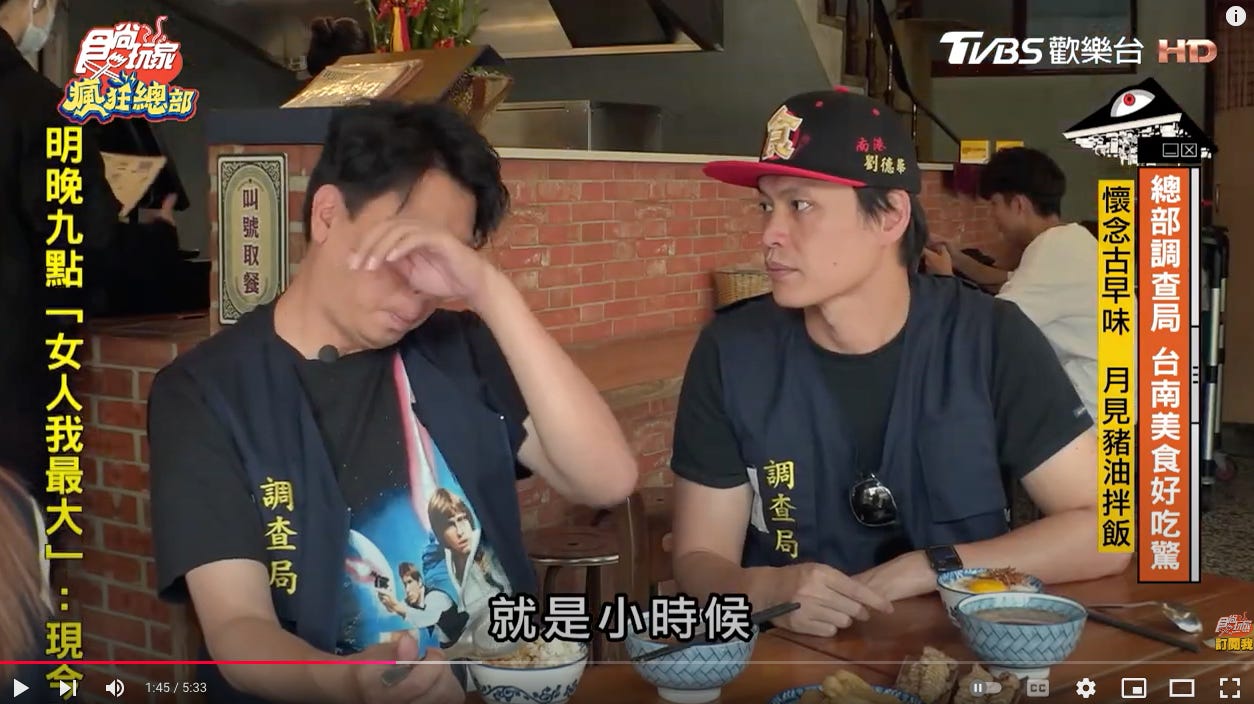
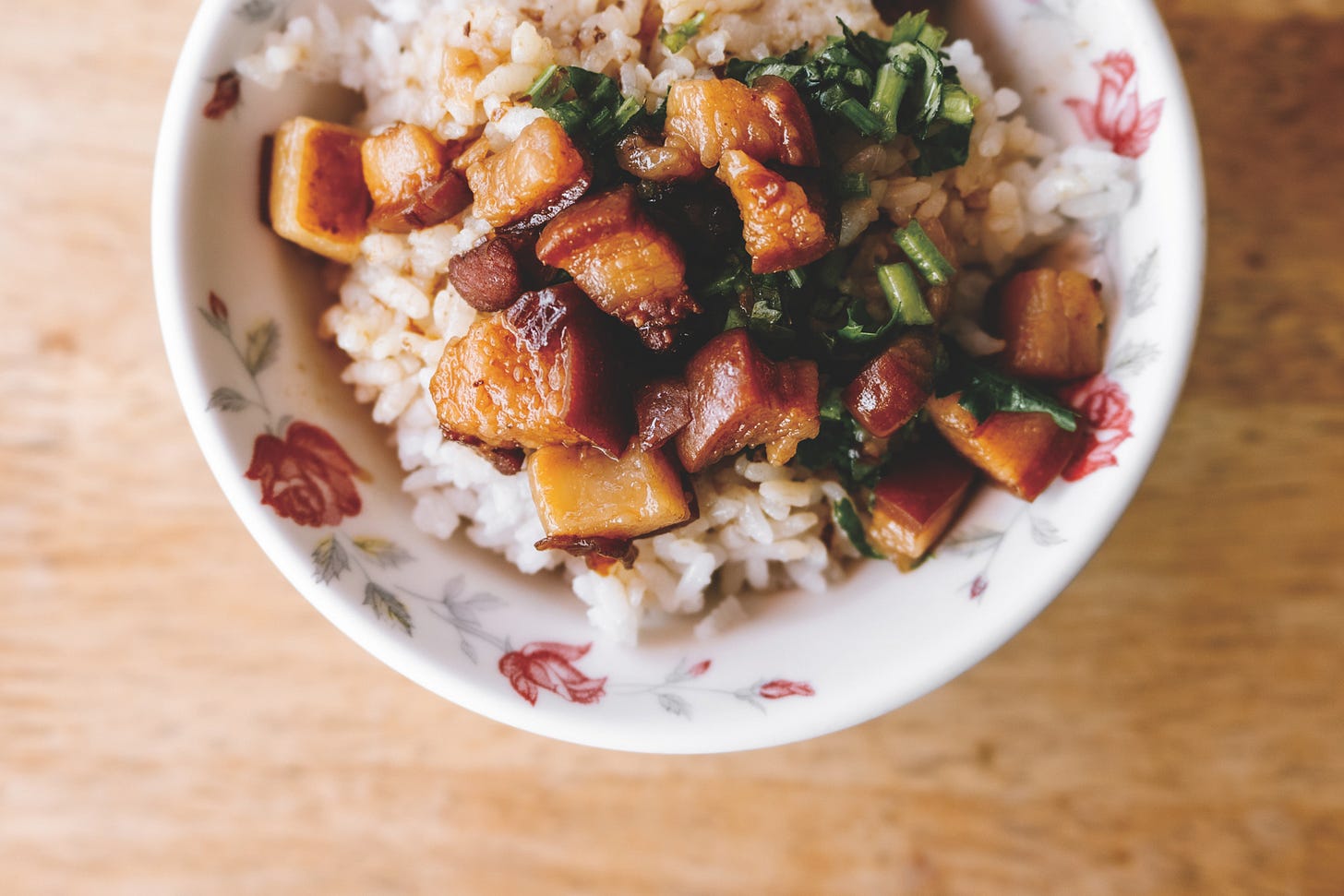
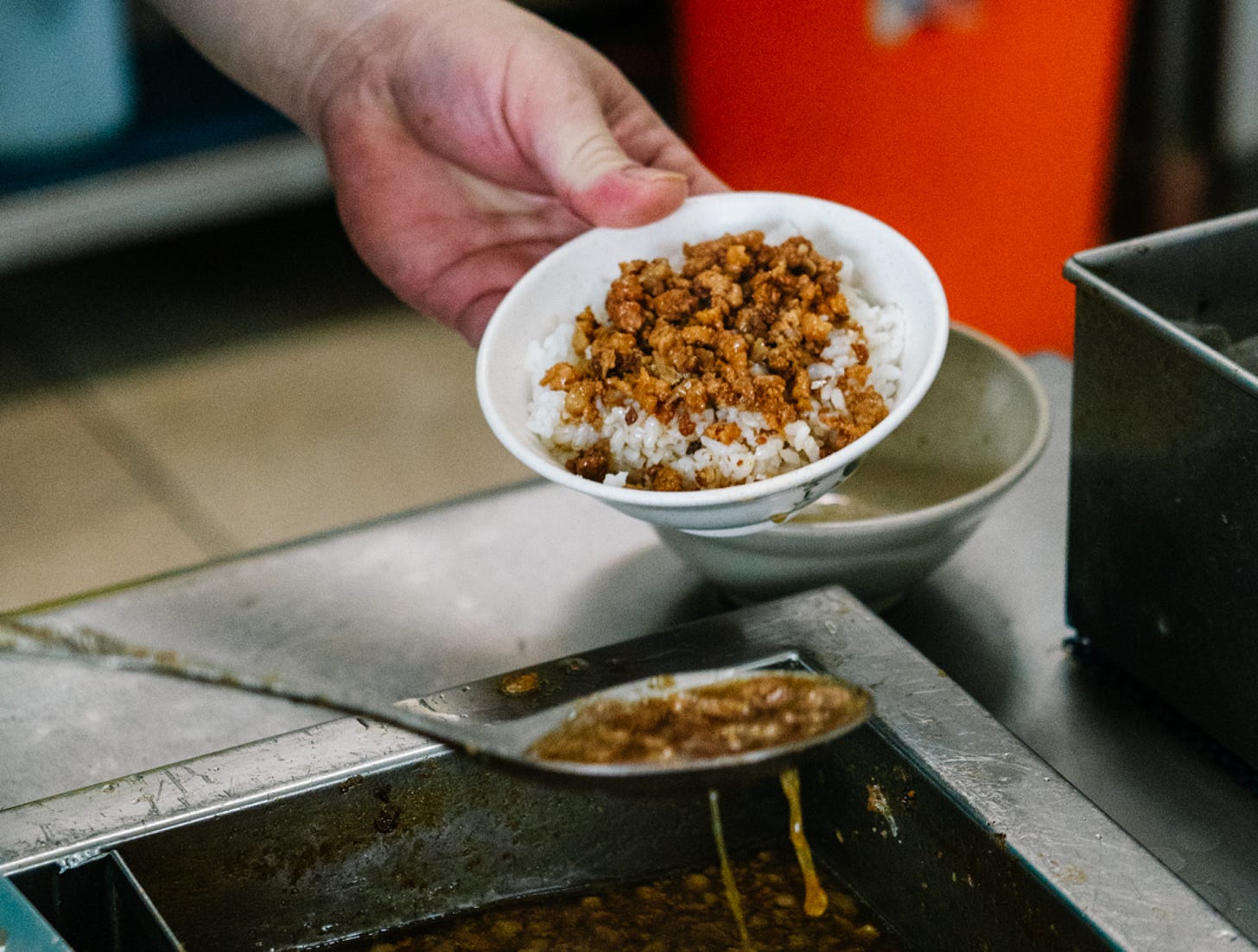
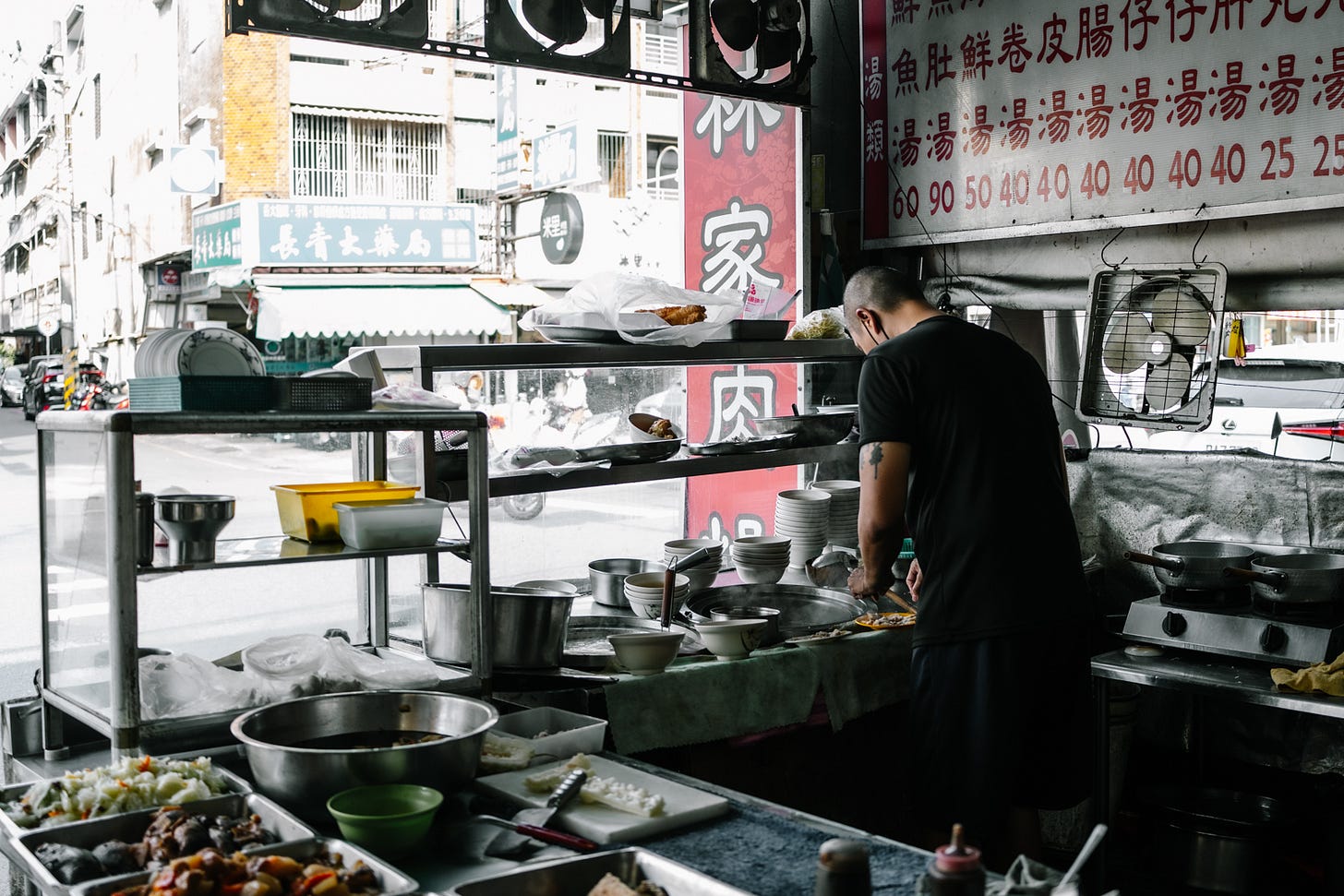
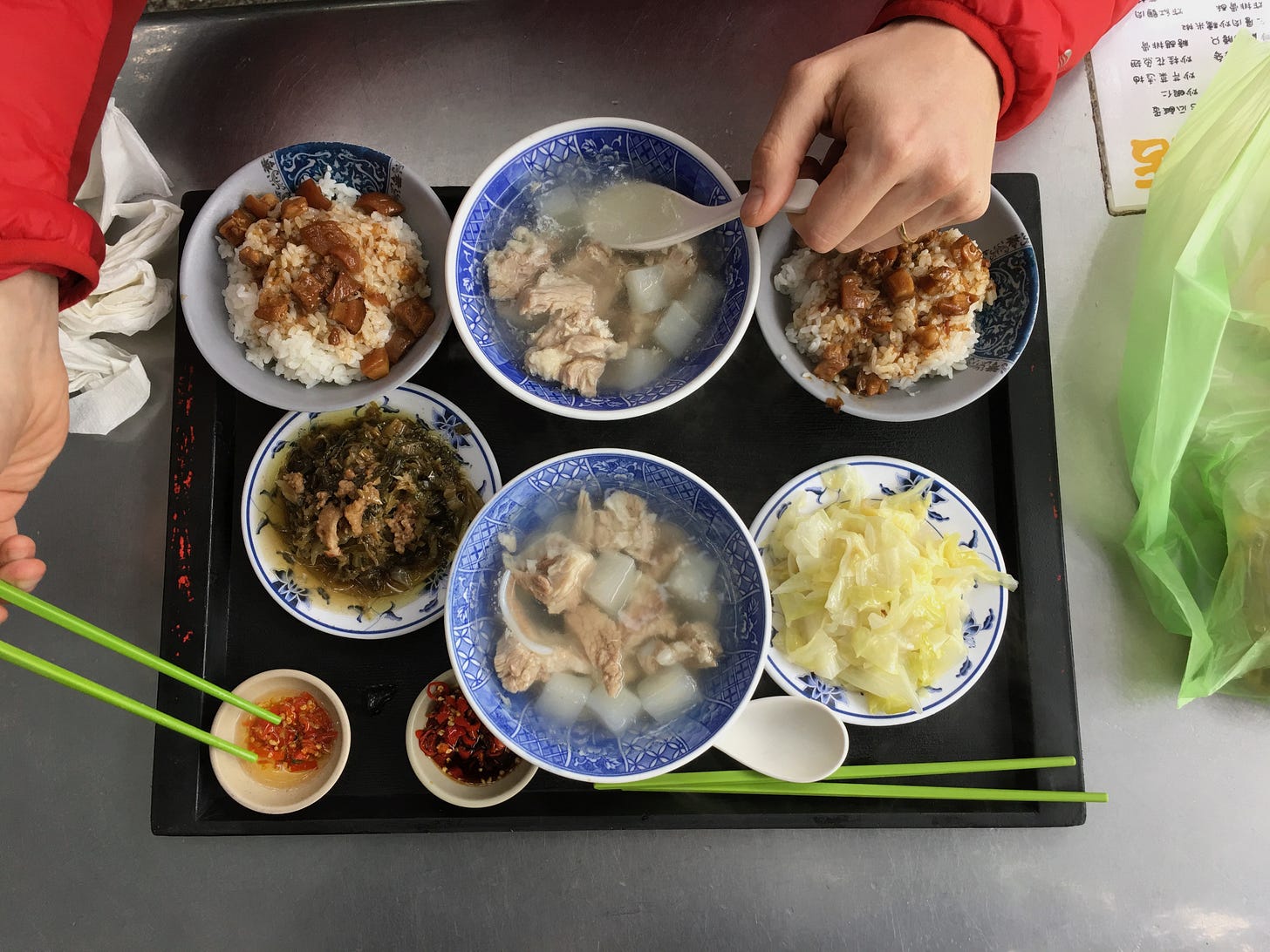


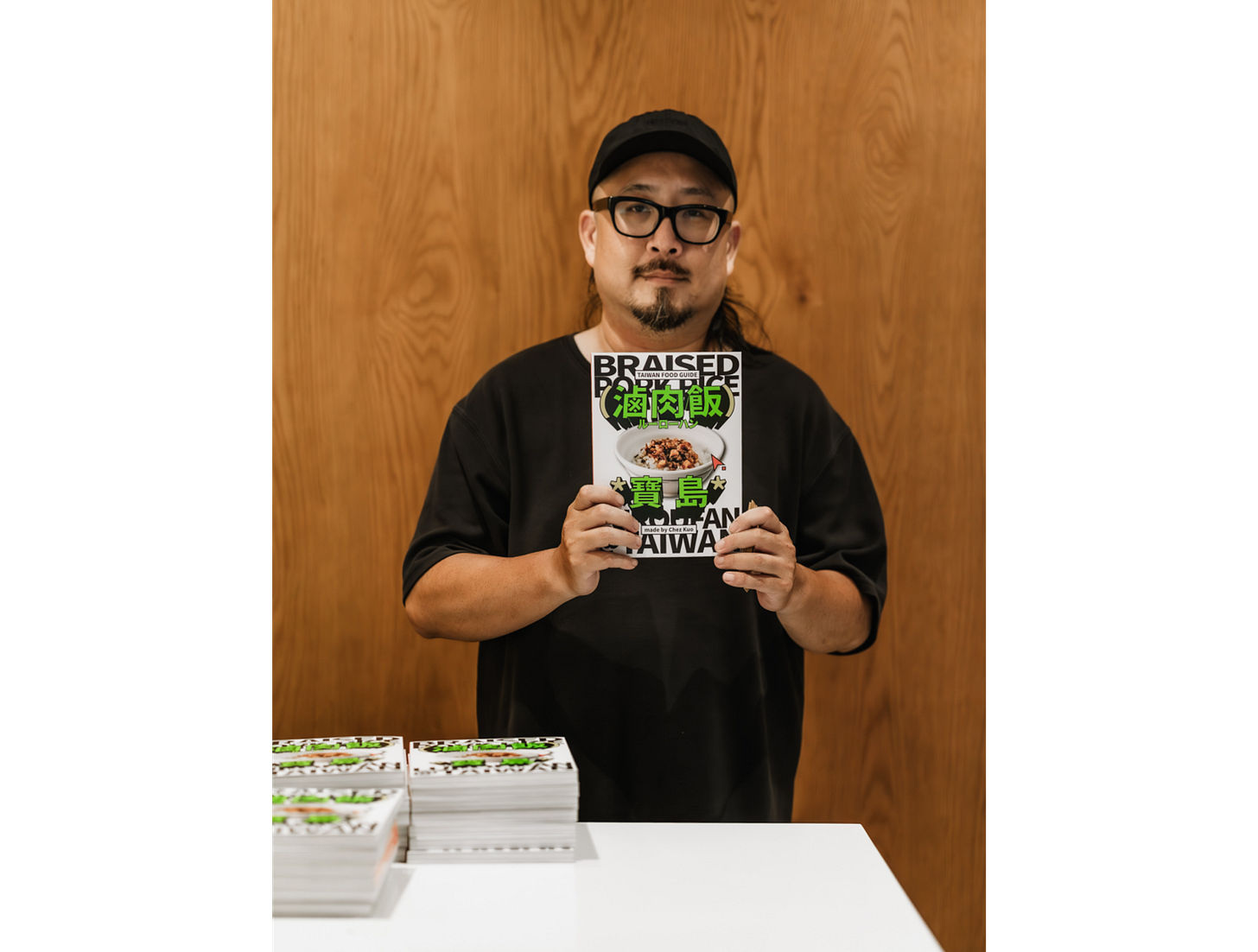
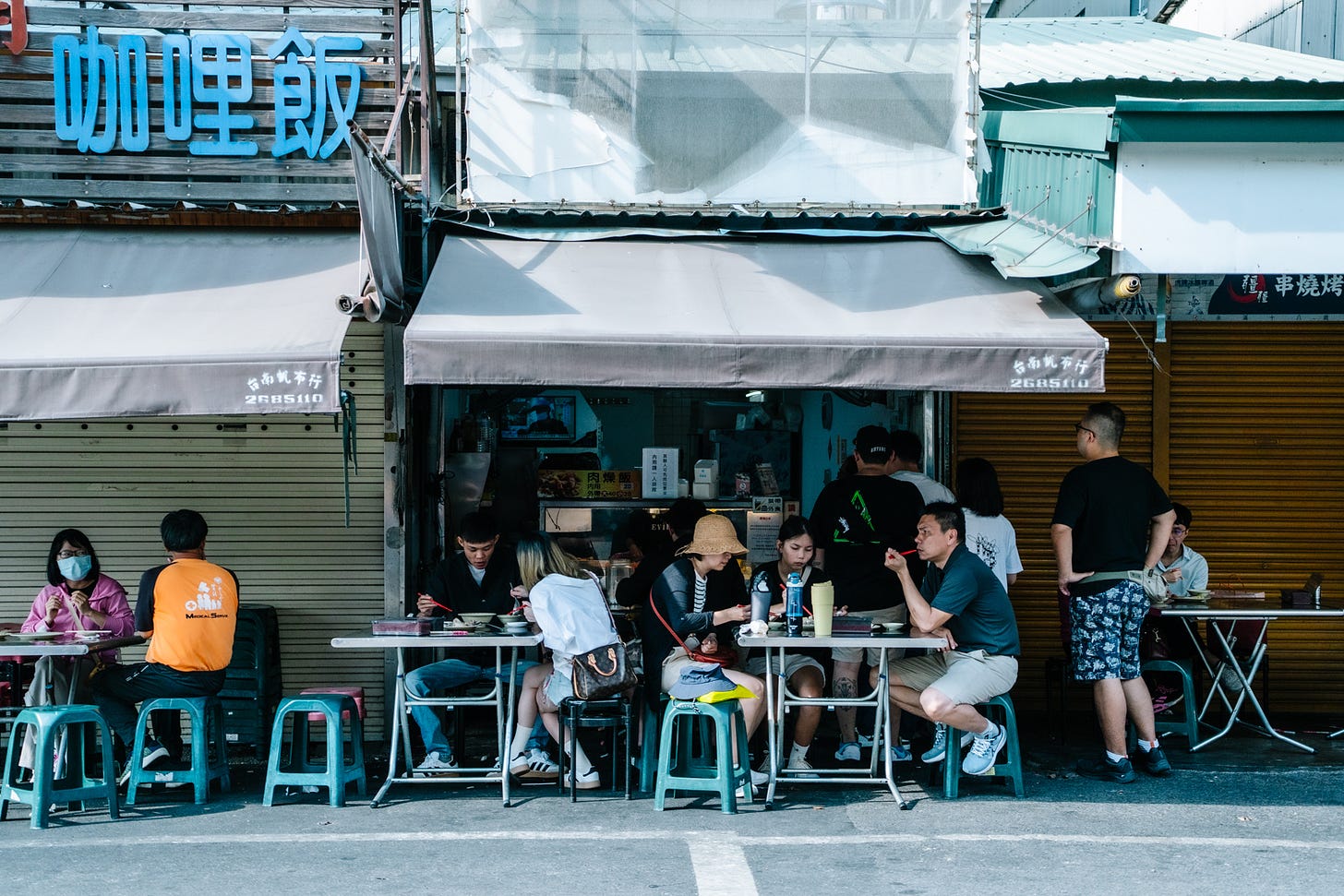

I loved reading this so much! My mom also grew up on a shoestring in Taiwan, and pork lard rice is a nostalgic childhood dish for her. I recently started eating meat again this year after 17 years of being vegetarian and then pescatarian, and my mom's pork lard rice was one of the first dishes I had after the transition.
I also went to the restaurant featured in the clip you shared, it was genuinely one of my favorite dishes in all of Tainan!
Brilliant!